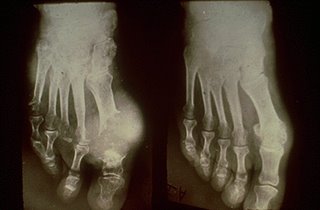
This week’s two minute tutorials were themed around transfusion (blood, platelets, FFP, cryoprecipitate, immunoglobulins and albumin). I was pleased to see that handouts have made a come back, but our original idea had been that visual aids would be brief revision notes rather than detailed notes. Have a look at mediglyphics.
The British Committee for Standards in Haematology (BCSH) have a collection of guidelines on transfusion that are well worth browsing.
The week’s reading had been Doctors and thin slicing. Interesting findings which none of the senior colleagues who read it found surprising. Certainly food for thought. I attended a course about communication last year and was told that communication was more important than what a doctor actually did with a patient. This strikes me as being unlikely. Worse though, if accepted as a correct premise it could undermine the practice of medicine. Is satisfaction a reasonable outcome measure when used alone? Is satisfaction now the same as satisfaction later? Richard Wakeford wrote a letter to the BMJ in 2003 (BMJ 2003;327:161 (19 July), doi:10.1136/bmj.327.7407.161) I quote a section of it here...
In its revalidation guidance documents for doctors the GMC says that one good professional comparison is with airline pilots. This comparison is helpful. Imagine two airlines, whose pilots' revalidation arrangements are on the following bases:
• Airline A—flight simulator skills tests, including rarely met but crucial challenges; a thorough medical examination
• Airline B—informal personal development plans, agreed privately with a colleague, maybe of their choice; cabin crew and passenger surveys of the gentleness of their landings and the clarity of their communications; a self declaration of sobriety, health, and honesty.
For the sake of argument, let us assume that one in every 15 pilots is shown by research to have at some point in their career an alcohol or other substance abuse problem. Which airline would you travel with?
Interesting topics this week
Tophaceous gout, which reminds me of this interesting paper regarding communication of information about gout treatment. Effective management of gout: an analogy. Wortmann R
Am J Med. 1998 Dec;105(6):513-4.
Chronic Q fever
The undiagnosable case (there is no such thing!....I’ll do a podcast on this sometime). We have certainly had some diagnostic challenges lately.
Next week’s reading for discussion continues the communication theme, The patient’s lament: hidden key to effective communication: how to recognise and transform. B Bub. Medical humanities 2004;30:63-69
The two minute tutorial topic for next week is Fungi. I will give more info on specific assignments when ID doc espeaks to me.
The team bids goodbye to Dr CT this week. No more dayglo stethoscopes.
MJM
No comments:
Post a Comment